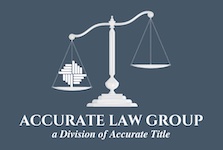PMI is ordinarily required on loans for more than 80% loan-to-value. Most individuals who turn to FHA have little to put down and will therefore require PMI every month. The amount is calculated against the amount borrowed and might account for a significant percent of the monthly payment. Homeowners therefore benefit from eliminating PMI from FHA loans, but new rules have changed how PMI removal works.
PMI Rules
In 2013, FHA made significant alterations to PMI guidelines. These relate to mortgages with case numbers issued after June 3, 2013. In the past, all FHA loans had a set clause for elimination of PMI when the amount owed approached a certain percentage. This no longer applies. There are now varying policies based on the starting principal and term of the mortgage. This article covers 2 typical types of loans.
Mortgages Under 90% LTV
For 30 year FHA loans where borrowers make a down payment of 10% or more, removing PMI is an option if two criteria are met. First, PMI must be paid for at least 11 years on that mortgage. Secondly, the balance of the mortgage must be 78% or lower than the purchase price or current market value.
Mortgages Higher Than 90% LTV
For 30 year FHA loans where the down payment is lower than 10% (such as the 3.5% minimum), removing PMI is not possible. PMI is due for the entire term of the mortgage despite the remaining principal. The only way to get rid of PMI is a refinance.
Eliminating PMI From FHA Loans
Eliminating PMI from FHA loans is not as simple as it used to be. Most borrowers choose FHA for the low 3.5% down payment requirement. It is helpful to understand that PMI can not be automatically eliminated from these loans. Customers with FHA case numbers generated before June 3, 2013 do not need to worry about this. Also, there are additional exceptions such as streamline refinances of mortgages endorsed prior to May 31, 2009 and Home Equity Conversion Mortgages. Speak with loan officer for additional information.

